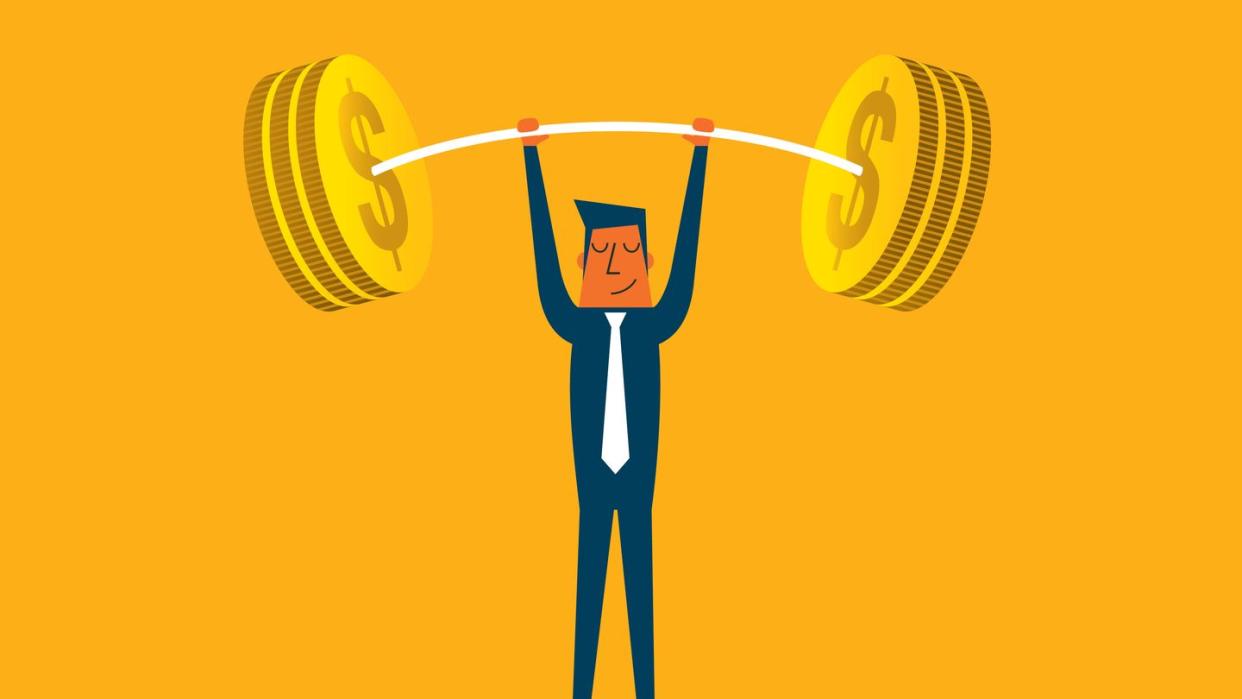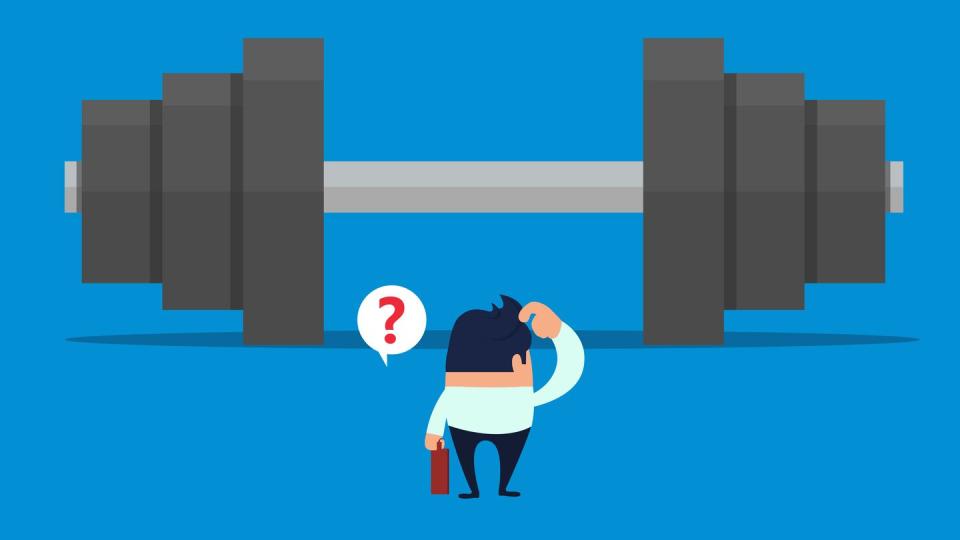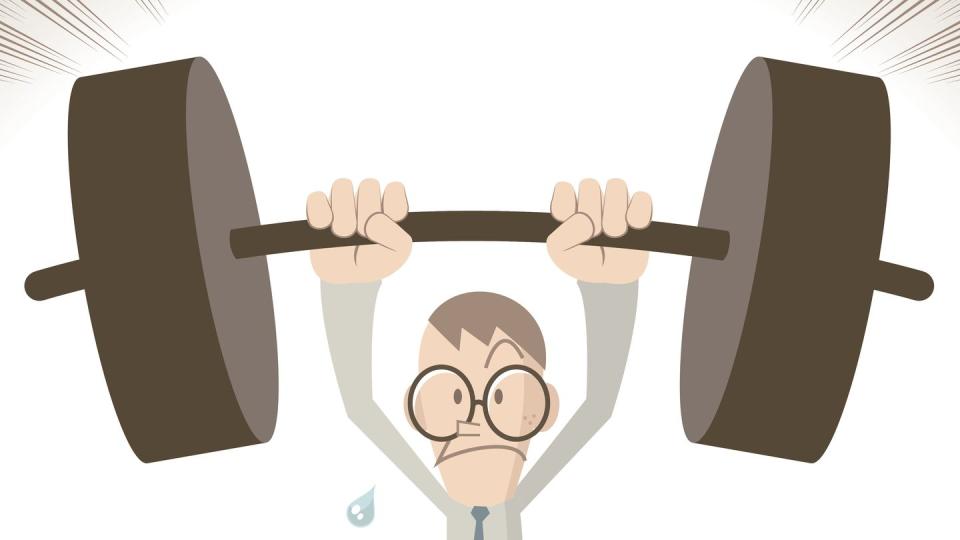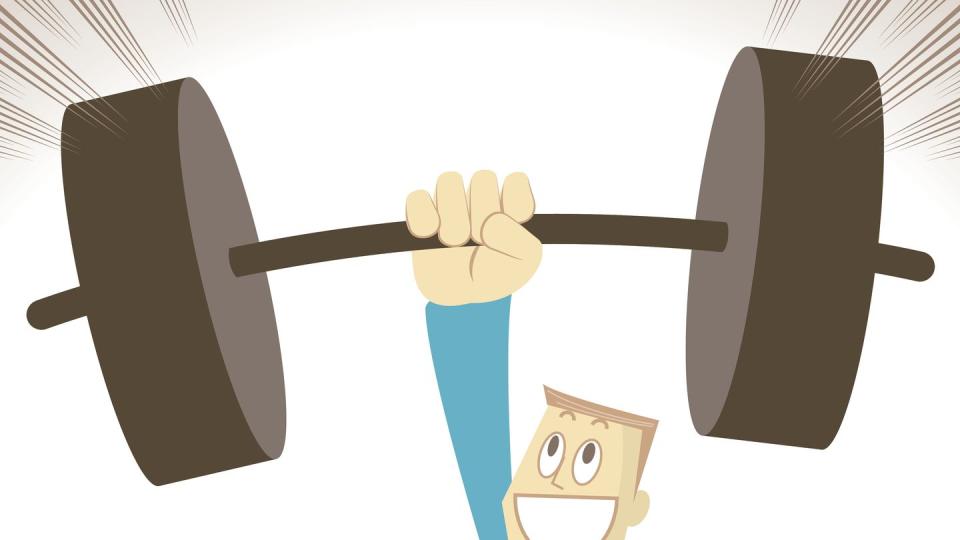The Financial 'Workout' That'll Make You Money in the New Year

Like most Americans, you probably penciled "get into shape" and "save money" somewhere near the top of your New Year's resolutions list. Though different, these two goals are far from unrelated. A recent survey by Marcus by Goldman Sachs found that 88 percent of Americans believe their financial well-being impacts their overall health, and studies have shown associations between financial stress and an increased risk of cardiovascular mortality—as well as everything from migraines to insomnia.
It stands to reason then that financial security helps to ward off not just sudden money troubles, but also long-term physical maladies.
That might help to explain why many Americans would rather focus on finance than fitness in the new year. Fifty-five percent told Marcus they’d hire a financial adviser over a personal trainer if the two cost the same. Seventy-eight percent would rather lose debt than lose weight. And 68 percent said they’d rather cut back on spending than cut back on food.
With so many consumers connecting health and finance, Marcus decided to design a “workout” for your money. “We asked ourselves: How might we use our insights about managing finances and achieving financial well-being to give people actionable tips to kick off 2019 on the right financial foot?” explains Elisabeth Kozack, Vice President of Product Strategy & Customer Experience at Marcus. The result is a free online tool for determining the best “workout” based on your “financial fitness personality.”
The personalities don’t correspond to age or income. So recent college graduates could easily be finance fitness pros, while a 35-year-old professional might be skipping their proverbial financial gym classes. Just as with physical fitness, we slip up and down the scale, and life-changing events like having kids can wreak havoc on both senses of “fit.” But wherever you are at this moment, here’s how to get back into saving shape.

The Workout Wanderer
You’re stuck. You have financial goals you want to reach (and can reach), but you have trouble starting. You just need a base workout, on top of which you can improve. The best workout: track your spending habits and maximize your savings. “So many people still have money in savings accounts that are achieving little return,” Kozack says. Move your money into a no-fee savings account and increase the volume of deposits that you make month to month. This helps eliminate any charges and earn you more on your savings. According to Marcus surveys, 56 percent of Americans opened their savings account without even exploring other account options.
Then there comes real discipline. That means saving that sales or holiday bonus you just received. And rethinking the subscriptions you mindlessly pay for each month. Downloading a personal finance management app like Clarity Money can help you track spending and allow you to jump the next big hurtles: building up a sizable emergency savings fund, opening a Roth IRA, and contributing more toward (or signing up for) your company’s retirement plan. You’re on your way.

The Class Canceler
You need help staying motivated. You save, but then expenses come up, or you splurge too often. You need a plan for the long haul. Those final hurtles for the wanderer need to be your starting point. “Many consumers don't even have $400 available should an emergency expense come up,” Kozack notes. So keep that emergency fund in mind and shoot for $1,000. And buckle down with your online spending. Removing all auto-saved credit cards from your browser and favorite sites may help you think twice about buying when you have to reach for your chunk of plastic. Want a bigger spending challenge? Go 1:1 with entertainment and savings. That means matching every dollar you spend on entertainment with a savings contribution. Looking to buy that $500 TV? Put $500 in your savings first. Can’t match it? Don’t spend it.

The Gym Rat
You’ve got a routine. You’re catching up on your company’s 401(k) contributions. You have recurring contributions to your own savings and investment accounts. Financial fitness is just around the corner. Keep going. Ignore that raise at work, Kozack suggests. “Just because you're earning more money doesn't mean you have to spend it. So let it gain some interest and put it into a CD or a high-interest savings account.” Maintaining a savings lifestyle even as earnings increase will fast-track you to fitness. This also means making sure other people’s lifestyles aren’t influencing yours. Social media FOMO can warp spending habits, Kozack adds. Try staying off Instagram if you’re feeling like a spendthrift.
You can also start putting the money you save into a variety of stocks, helping to diversify your portfolio and thus limit risk. Make sure to also check the interest rates on your credit cards as some may change over time. If you miss a payment and carry a balance, look into a zero-interest balance transfer card. It’s like a knee brace to help stabilize your next lift.

The Cross-Trainer
You’re crushing your financial fitness. You’re maintaining discipline and seeing results. You want a challenge. Now get to that next level. Increase your contribution to your HSA. “There are a number of different reasons to do this,” Kozack says. “Your money can sit there year after year, you pay it with pre-tax dollars, and you're not taxed on withdrawals as long as you use the funds for what the IRS considers qualified medical expenses.” For more healthy returns on your money, look once more into no-penalty CDs. Watch interest rates closely and don’t be afraid to change banks if you find a better deal.
With heightened vigilance and savings fund contributions, you're on your way to a healthy retirement—both financially and physically.
You Might Also Like

